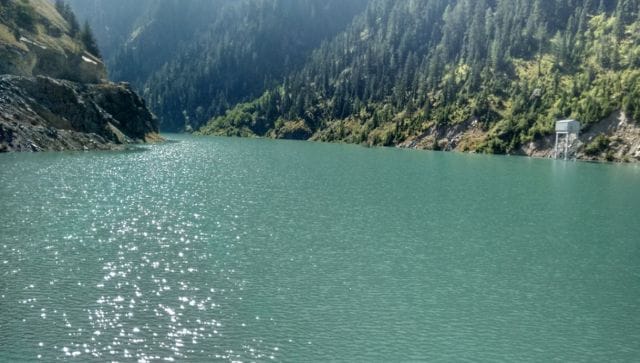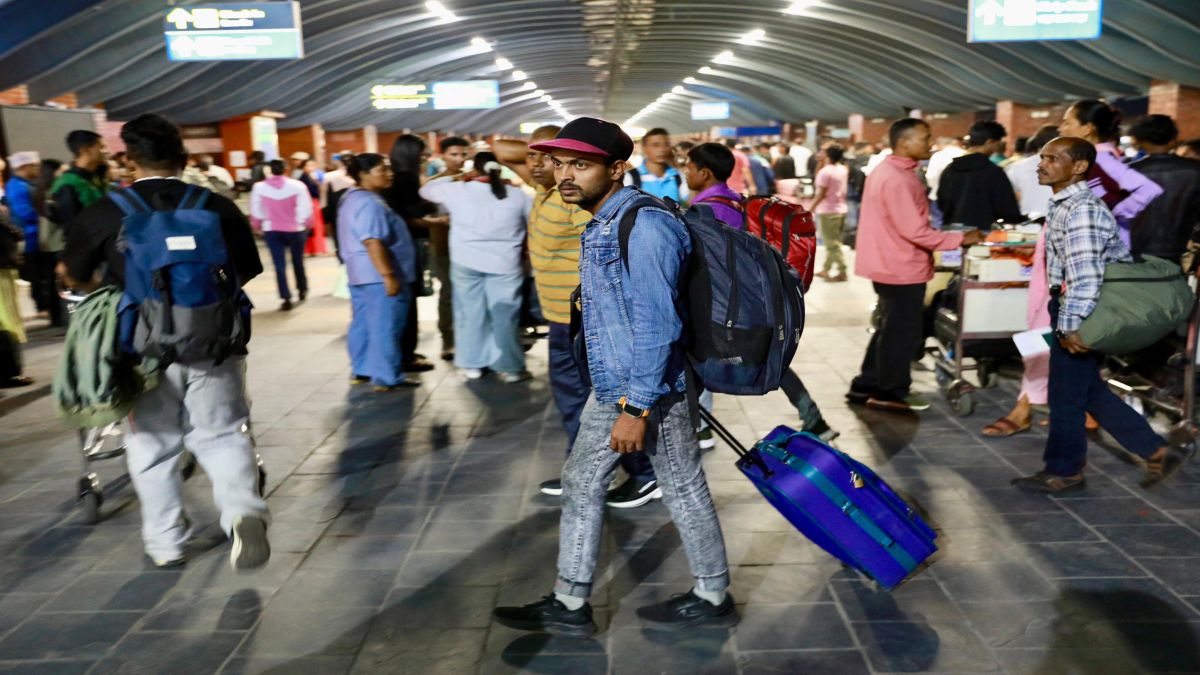India and Pakistan have many a difference, some dating back decades. The Indus Waters Treaty is one such contentious issue. On 25 January, India issued a notice to Pakistan for modification of the Indus Waters Treaty (IWT) of September 1960 following the neighbouring nation’s “intransigence” on its implementation, according to sources. The
notice was sent through respective commissioners for Indus waters because Islamabad refused to discuss and resolve the issue of India’s Kishenganga and Ratle Hydro Electric Projects for the last five years, despite New Delhi’s efforts, said sources, reports NDTV. India is seeking modifications to the treaty to make it easier for Pakistan to enter intergovernmental negotiations within 90 days to rectify the material breach of IWT. According to sources, this process will update the treaty to incorporate lessons learned over the last 62 years. “India has always been a steadfast supporter and a responsible partner in implementing IWT in letter and spirit. However, Pakistan’s actions have adversely impinged on the provisions of IWT and their implementation, and forced India to issue an appropriate notice for modification of IWT,” the source added. What is the Indus Waters Treaty? Before the Partition, the six rivers of the
Indus basin were a shared source. They start in Tibet, follow across the Himalayan ranges and end in the Arabian sea south of Karachi, according to a report in The Indian Express. While the land was divided during the Partition, nothing was said about the waters. The rivers flow from India to Pakistan and it gave the latter reasons to worry. An Inter-Dominion accord was signed on 4 May 1948, which said that India would release water to Pakistan for an annual payment. However, this was not a feasible arrangement. The Indus Waters Treaty between India and Pakistan came into force in 1960 after nine years of negotiations with the World Bank being a signatory. It was signed by former Prime Minister Jawaharlal Nehru and then Pakistan president Ayub Khan. [caption id=“attachment_12058632” align=“alignnone” width=“640”] The Beas is among the three rivers of which India has control. AFP[/caption] Under the treaty, while all waters of the eastern rivers, Sutlej, Beas, and Ravi, which amount to 33 million acre-feet (MAF) annually, are assigned to India for unrestricted use, Pakistan had control over the waters of the western rivers, Indus, Jhelum, Chenab, amounting to 135 MAF. India could use the water for consumption but there were restrictions on building storage systems. IWT specifies that other than a few cases, India cannot build storage and irrigation on the western rivers. The treaty gives India the right to generate hydroelectricity with the use of the western rivers with specifications for design and operation in place. Pakistan also has the right to object to the design of the Indian projects. How did the IWT lead to differences? One of India’s biggest grievances is that the treaty does not allow it to build storage systems on Sutlej, Beas, and Ravi, the western rivers. According to the treaty, such systems can be built under exceptional circumstances but India complains that any such attempts are blocked by Pakistan. It does not help that these rivers lie in Jammu and Kashmir, which remains an unresolved issue between India and Pakistan. The two nations have been at loggerheads over several projects, the Kishenganga, Ratle Hydro Electric Projects, and then the Tulbul project. [caption id=“attachment_12058582” align=“alignnone” width=“640”]
 In 2015, Pakistan sought a neutral expert to examine its technical objections to India’s Kishenganga and Ratle Hydro Electric Projects. Image courtesy: NHPC Limited[/caption] What’s the status of these projects? The Indian government had resolved to speed up the Tulbul Navigation Project after the Uri terror attack in 2016 when four armed terrorists launched grenades on the army camp in Kashmir killing 17 soldiers and leaving 19 injured. Called the Wullar Barrage Project in Pakistan, this plan has been put on in 1987. There were five meetings of the
Permanent Indus Commission , a body of officials from both nations to implement and manage the treaty, between 2017 and 2022. According to sources, the efforts by India to find a way forward did not yield results as Pakistan refused to discuss the issue, according to a report in The Times of India. The Kishenganga dam project worth $864 million was initiated in 2007 and was scheduled to be completed in 2016. Pakistan took the matter to the Court of Arbitration in 2010 saying that it violated the IWT. Three years later, in 2013, the court ruled in India’s favour giving a nod to the project with the condition that a minimum flow of water of nine cubic metres per second should be maintained. The Ratle hydroelectric power project was initiated in June 2013 on the Chenab river and former Prime Minister Manmohan Sigh had said it would help in the development of Jammu and Kashmir. However, Pakistan raised objections saying that it violated the treaty. [caption id=“attachment_12058732” align=“alignnone” width=“640”]
In 2015, Pakistan sought a neutral expert to examine its technical objections to India’s Kishenganga and Ratle Hydro Electric Projects. Image courtesy: NHPC Limited[/caption] What’s the status of these projects? The Indian government had resolved to speed up the Tulbul Navigation Project after the Uri terror attack in 2016 when four armed terrorists launched grenades on the army camp in Kashmir killing 17 soldiers and leaving 19 injured. Called the Wullar Barrage Project in Pakistan, this plan has been put on in 1987. There were five meetings of the
Permanent Indus Commission , a body of officials from both nations to implement and manage the treaty, between 2017 and 2022. According to sources, the efforts by India to find a way forward did not yield results as Pakistan refused to discuss the issue, according to a report in The Times of India. The Kishenganga dam project worth $864 million was initiated in 2007 and was scheduled to be completed in 2016. Pakistan took the matter to the Court of Arbitration in 2010 saying that it violated the IWT. Three years later, in 2013, the court ruled in India’s favour giving a nod to the project with the condition that a minimum flow of water of nine cubic metres per second should be maintained. The Ratle hydroelectric power project was initiated in June 2013 on the Chenab river and former Prime Minister Manmohan Sigh had said it would help in the development of Jammu and Kashmir. However, Pakistan raised objections saying that it violated the treaty. [caption id=“attachment_12058732” align=“alignnone” width=“640”] Control over the waters of the three western rivers, the Indus, Chenab, and Jhelum (pictured), went to Pakistan. AFP[/caption] In 2015, Pakistan sought a neutral expert to examine its objections to the Kishenganga and Ratle projects. However, it withdrew the next year and proposed that a Court of Arbitration should look into its objections. Sources informed that the action by Pakistan was in contravention of the graded mechanism of dispute settlement envisaged by Article IX of the treaty. Accordingly, India made a separate request for the matter to be referred to a neutral expert. “The initiation of two simultaneous processes on the same questions and the potential of their inconsistent or contradictory outcomes creates an unprecedented and legally untenable situation, which risks endangering IWT itself. The World Bank acknowledged this itself in 2016, and took a decision to ‘pause’ the initiation of two parallel processes and request India and Pakistan to seek an amicable way out,” sources said. But the meetings between 2017 and 2022 were inconclusive. At Pakistan’s continuing insistence, the World Bank recently initiated actions on both the neutral expert and Court of Arbitration processes, they said. Now India wants to modify the treaty and hence has issued notice to the neighbouring nation. With inputs from agencies Read all the Latest News , Trending News ,
Cricket News , Bollywood News , India News and Entertainment News here. Follow us on
Facebook,
Twitter and
Instagram.
After the Partition, while borders were drawn between India and Pakistan, there was nothing said about dividing waters. In 1960, after nine years of negotiation, the Indus Waters Treaty came into being. It chalked out the control of six rivers running across the Indus basin
Advertisement
End of Article


)

)
)
)
)
)
)
)
)



